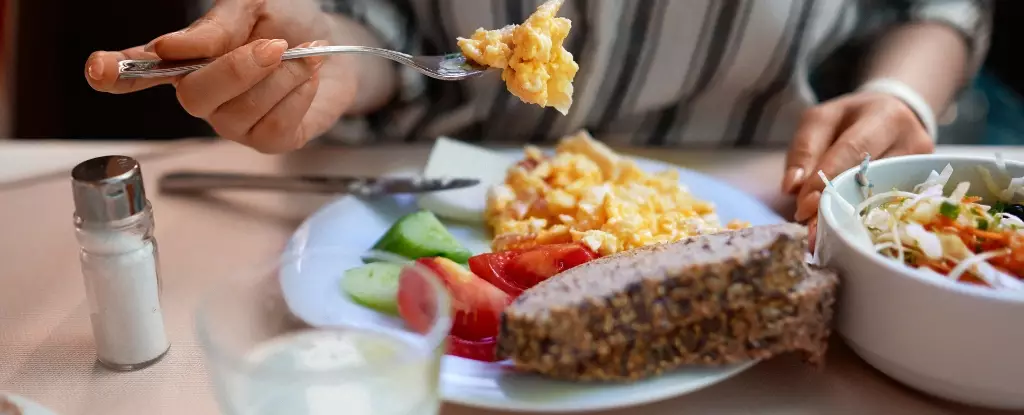In a world increasingly dominated by quick-fix medications for weight loss, the allure of drugs like Ozempic and Wegovy is hard to ignore. However, surveys reveal that many individuals still prefer natural methods over pharmaceutical solutions. This preference is rooted in the desire for sustainable, healthy approaches that do not rely on medications. Indeed, as a family physician with a background in nutrition, I advocate for strategies that leverage the body’s natural systems to promote weight loss. What many may not realize is that scientific research is illuminating pathways that harness nutrients and dietary practices to mimic the physiological effects of these popular weight-loss drugs.
Understanding GLP-1: The Hormonal Key to Satiety
At the heart of the emerging natural strategies for weight loss lies a hormone known as GLP-1 (glucagon-like peptide 1). This hormone plays a crucial role in signaling fullness, which can profoundly influence food intake. Medications like semaglutide work by elevating GLP-1 levels while inhibiting the action of DPP-4, an enzyme that breaks down the hormone. The end result? A prolonged sensation of being satiated, which leads to reduced food consumption. What’s intriguing, however, is that certain lifestyle and dietary changes can also trigger the production of GLP-1, allowing people to experience similar benefits without the use of medications.
The Power of Whole Foods: Fiber and Healthy Fats
Several nutrients have shown the potential to boost GLP-1 naturally. Among these, fiber stands out as a powerhouse. Foods rich in fiber—such as beans, whole grains, fruits, and vegetables—engage the gut microbiota, which ferments fiber into short-chain fatty acids. These byproducts are significant stimulants of GLP-1 production. What’s more, ample fiber consumption correlates strongly with weight loss, often yielding results even when calorie-conscious eating is not strictly followed.
Equally notable are monounsaturated fats, typically found in healthy oils like olive oil and in foods like avocados. Research indicates that adding these fats to meals can elevate GLP-1 levels significantly. A fascinating study illustrated that pairing bread with olive oil resulted in greater GLP-1 secretion compared to bread with butter, suggesting that healthier fat choices can enhance the satiety effects of our meals.
It’s Not Just What You Eat—It’s How You Eat
While food choice is essential, the methodology of eating also plays a critical role in how efficiently these meals can promote satiety. Research has demonstrated that the eating sequence—what foods we consume first—has a substantial impact on GLP-1 levels. For instance, consuming protein-rich foods or vegetables prior to carbohydrates can lead to higher GLP-1 responses compared to the reverse sequence. This observation emphasizes the importance of not just nutritional content but also meal composition and structure.
Moreover, the timing of meals is key. Circadian rhythms influence our hormonal responses, and studies suggest that meals eaten earlier in the day may stimulate a more significant release of GLP-1 compared to the same meals consumed later. This insight partially supports the age-old adage of eating a hearty breakfast and having lighter dinners, with evidence showing that people might achieve better weight loss by adhering to this pattern.
Mindfulness in Eating: The Impact of Pace and Attention
Pace and attention during meals are equally important factors that warrant attention. Research indicates that the duration taken to consume a meal can affect GLP-1 levels. For example, savoring ice cream over an extended period results in greater GLP-1 release compared to hastily eating it. This observation reinforces the concept of mindful eating—focusing on the experience of eating can enhance biochemical responses and promote greater satiety.
Interestingly, even the mechanical processes of eating, such as chewing thoroughly, have shown potential benefits. It has been demonstrated that eating whole foods, such as shredded vegetables, rather than drinking purees, augments GLP-1 production—another reminder of how the methods we use to consume food can influence our body’s hormonal response.
Beyond Medications: Embracing Holistic Health
While these natural strategies may not reach the potency levels of the pharmaceutical options, their long-term benefits for health are undeniable. Medications may achieve rapid weight loss but come with their own sets of risks and concerns. In contrast, a diet rich in fiber, healthy fats, and mindful practices can reduce risks for chronic diseases, such as heart disease, more effectively than many weight-loss drugs. The Mediterranean diet, for instance, is implicated in lowering cardiovascular risks and offers a more holistic view of health than short-term weight loss.
As the conversation around weight loss evolves, individuals seeking healthier lifestyles can find empowerment in understanding how their nutritional choices and eating patterns evoke hormonal responses. By implementing these natural, evidence-based strategies, we not only stimulate GLP-1 production but also cultivate a healthier relationship with food—one that prioritizes well-being over mere numbers on a scale.


Leave a Reply